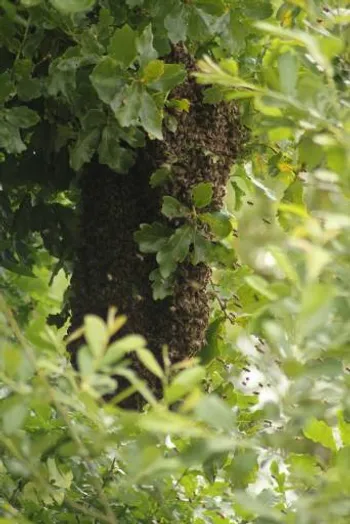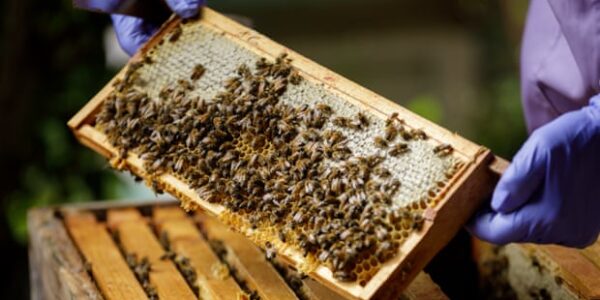
It’s that time of year again! Second half of April through to end of July is typical swarming season
here in the UK, weather dependent of course! A bright warm sunny day will see a swarm make its
spectacular exit from it’s hive and settle on a tree, bush, conservatory roof or car bonnet.
Swarming is a natural reproductive process that ensures the colony’s continued survival. However with the permanent presence of disease threatening our bees, swarms no longer survive if left alone to fend for themselves………as well as causing a nuisance to the public. Therefore the advice if you see a swarm, and it is a marvelous sight to be-hold is to contact a beekeeper. The question always posed is, “how do you collect a swarm?”.
So here you go, this is how you collect a swarm (some of these photos are courtesy of a lady who
contacted me to remove the bees that had took up residence in a tree outside her house)




Once positioned correctly or as well as possible considering we are up a ladder, with a box and in excess of 8,000 bees the main branch that the bees are clustered on is, dependent on it’s size chopped allowing the swarm to fall into the box. Alternatively if removing the branch is not possible we give it a big firm shake causing most of the bees to fall into the box. If most of the swarm is contained in the box in this way, and I mean maybe about one hundred bees still flying about then this stage is complete.

carried down the ladder to be turned upside down (yes really) on to a sheet already laid out.
Propped up by a stone or brick, whatever is to hand the remaining bees that are flying or still in the tree are signaled to by those in the box (via pheromones) to fly down to walk into the box to join their Queen and rest of their colony. This can be seen in the picture below.


swarm to a new hive already prepared with frames ready for new occupants. The bees are literally
poured in from the box. Of course some bees will fly up and those in the hive will fan by sticking
their bottoms in their air and releasing a pheromone advising the flying bees this is now home. If the Queen is present the others will follow as before. This can be seen in the picture below.


I hope you enjoyed this insight into swarm collection, any questions or interested in becoming a
beekeeper feel free to email me [email protected]
Have a great day
Carly x





